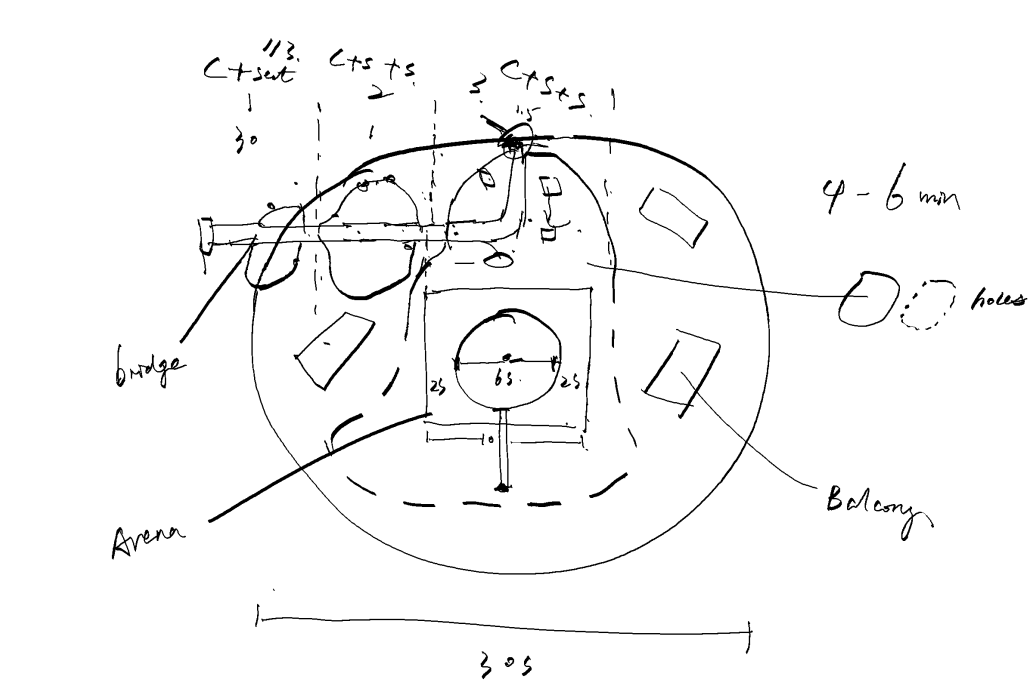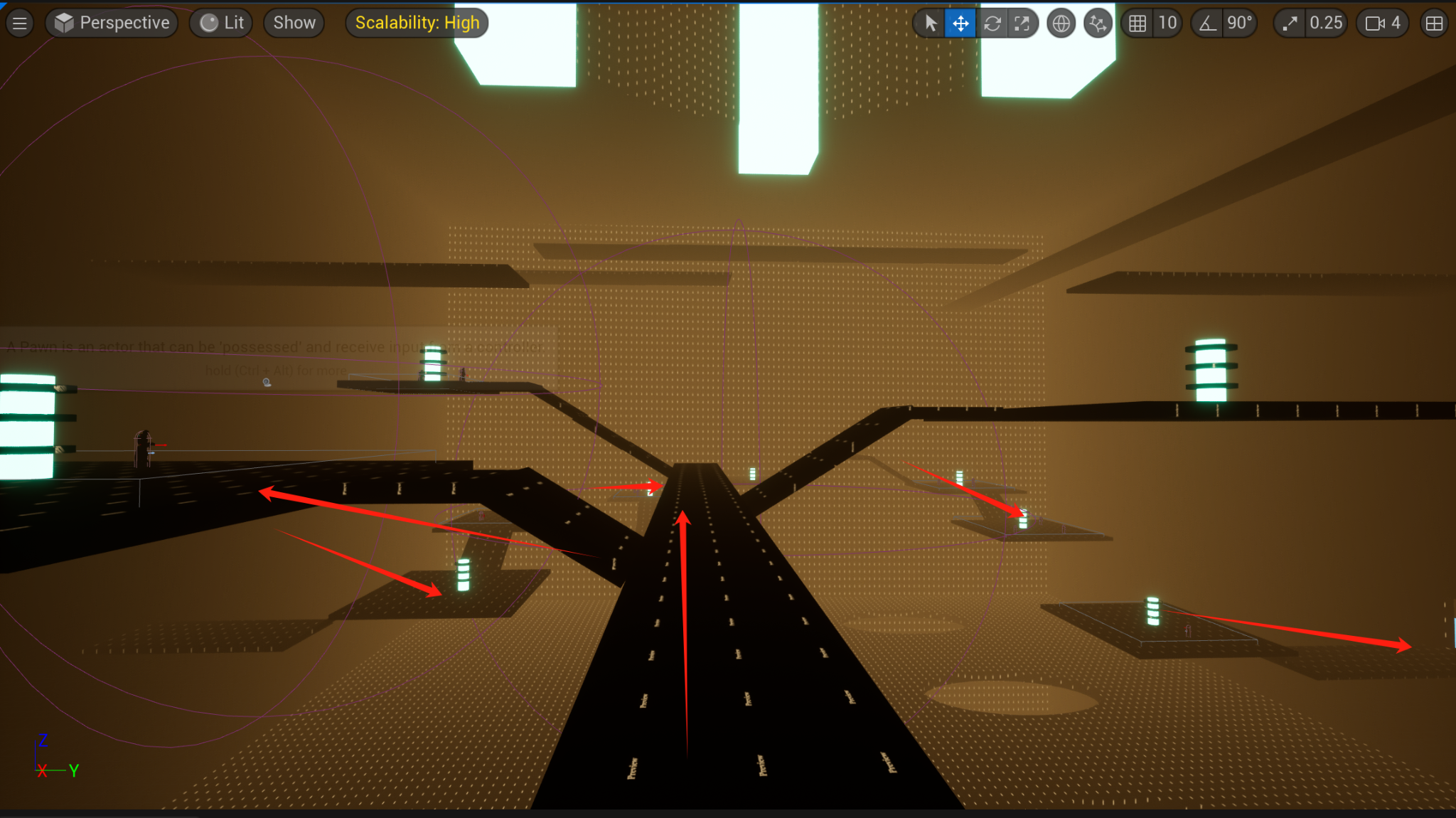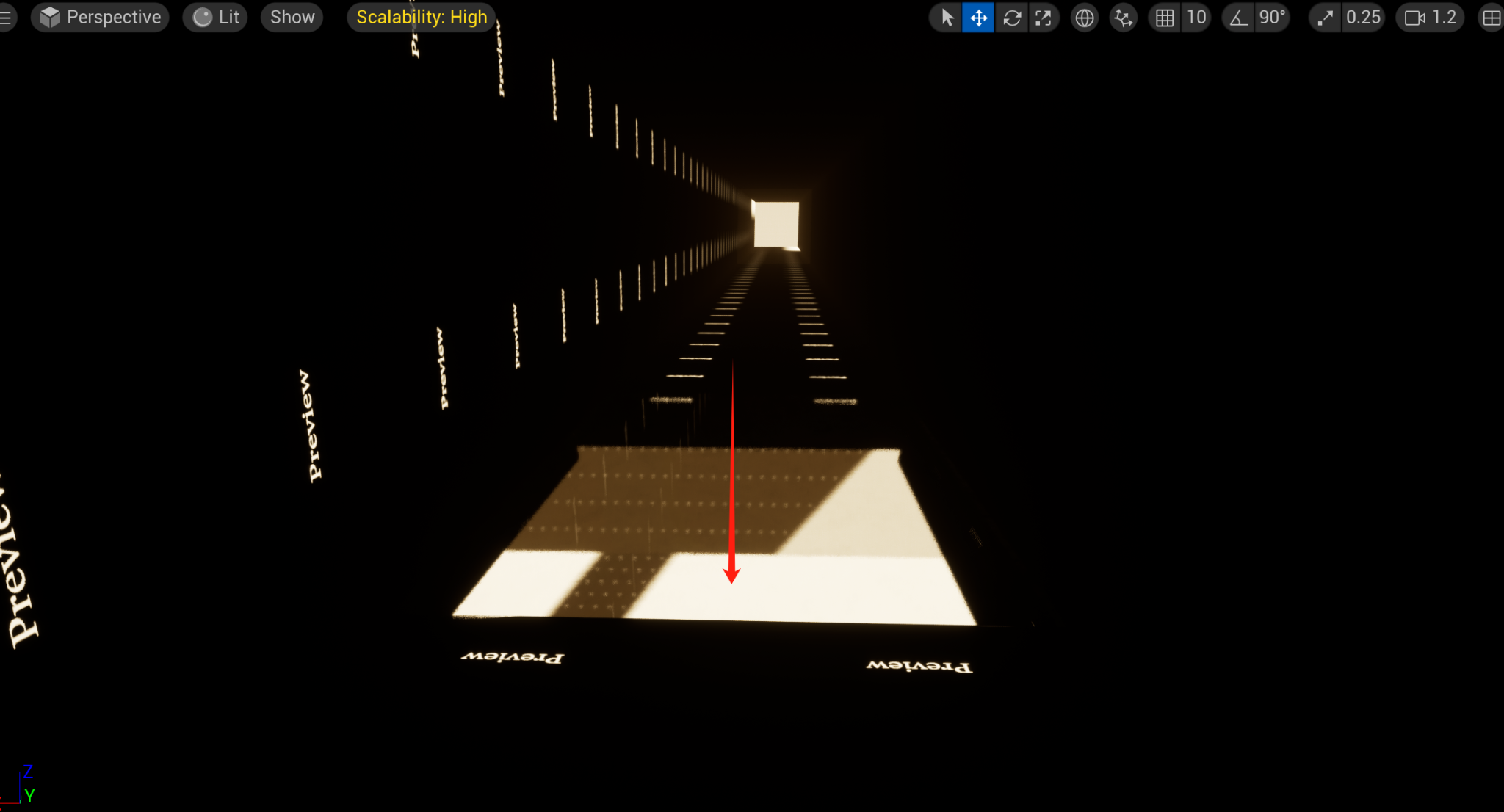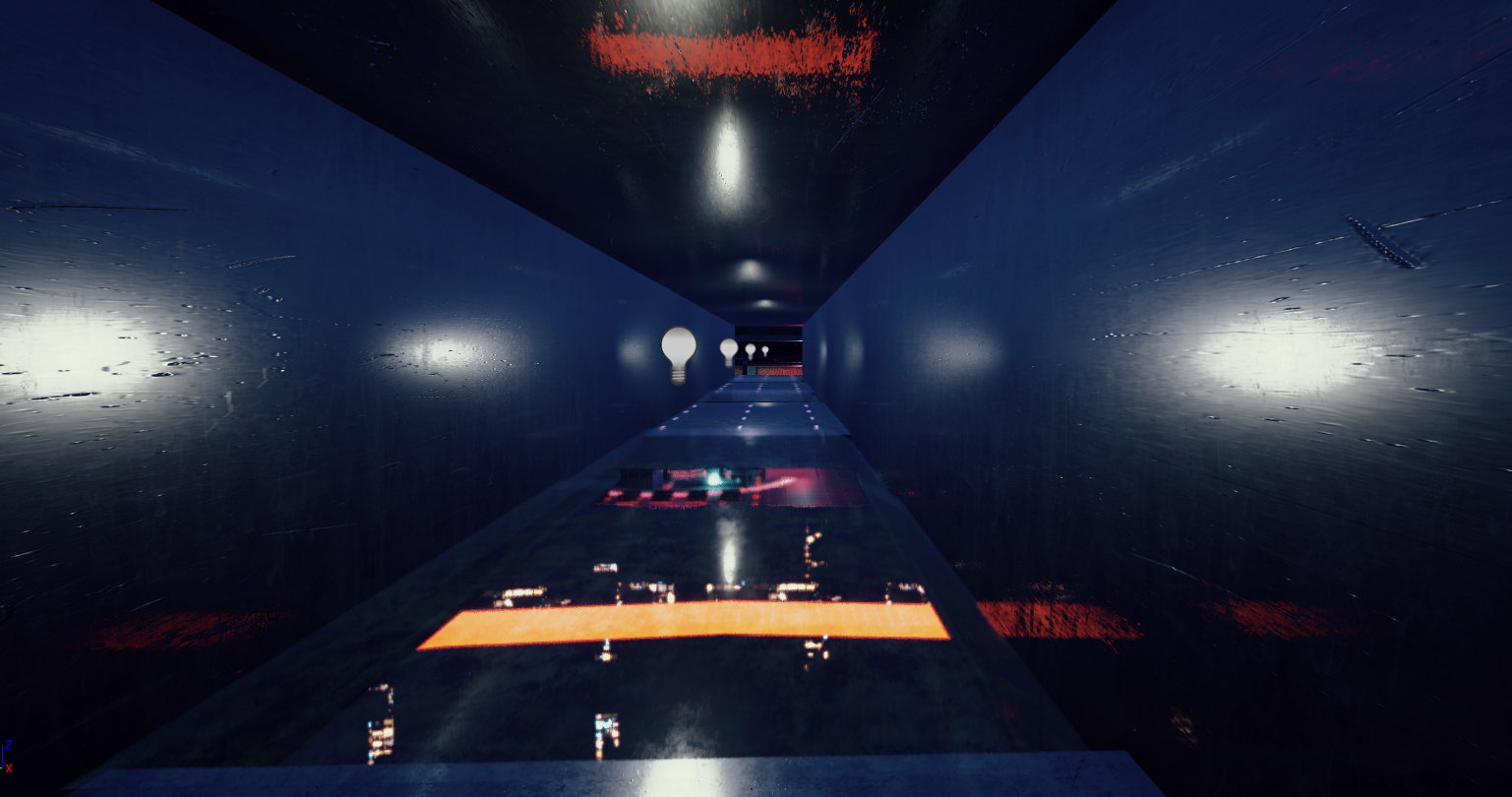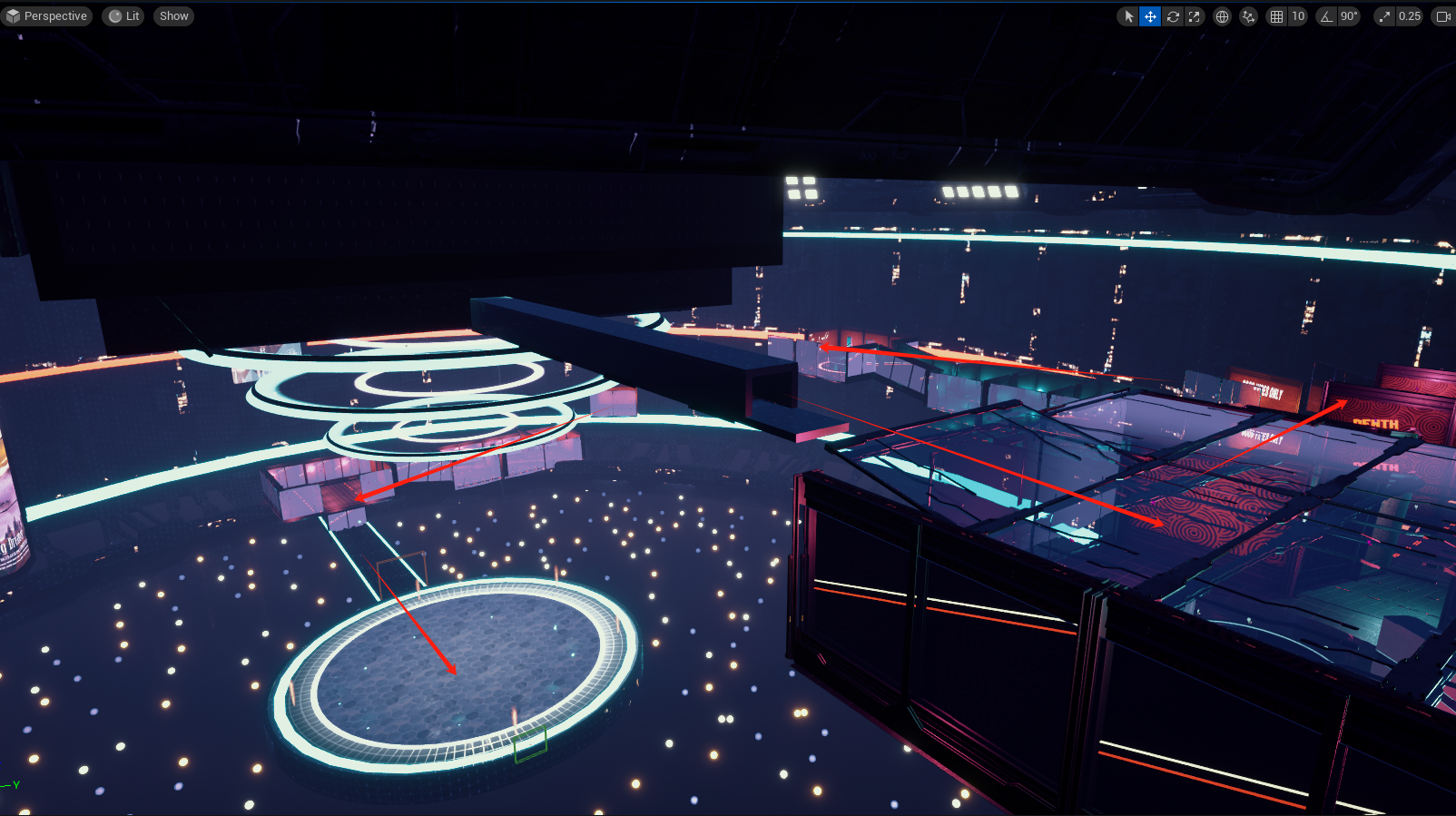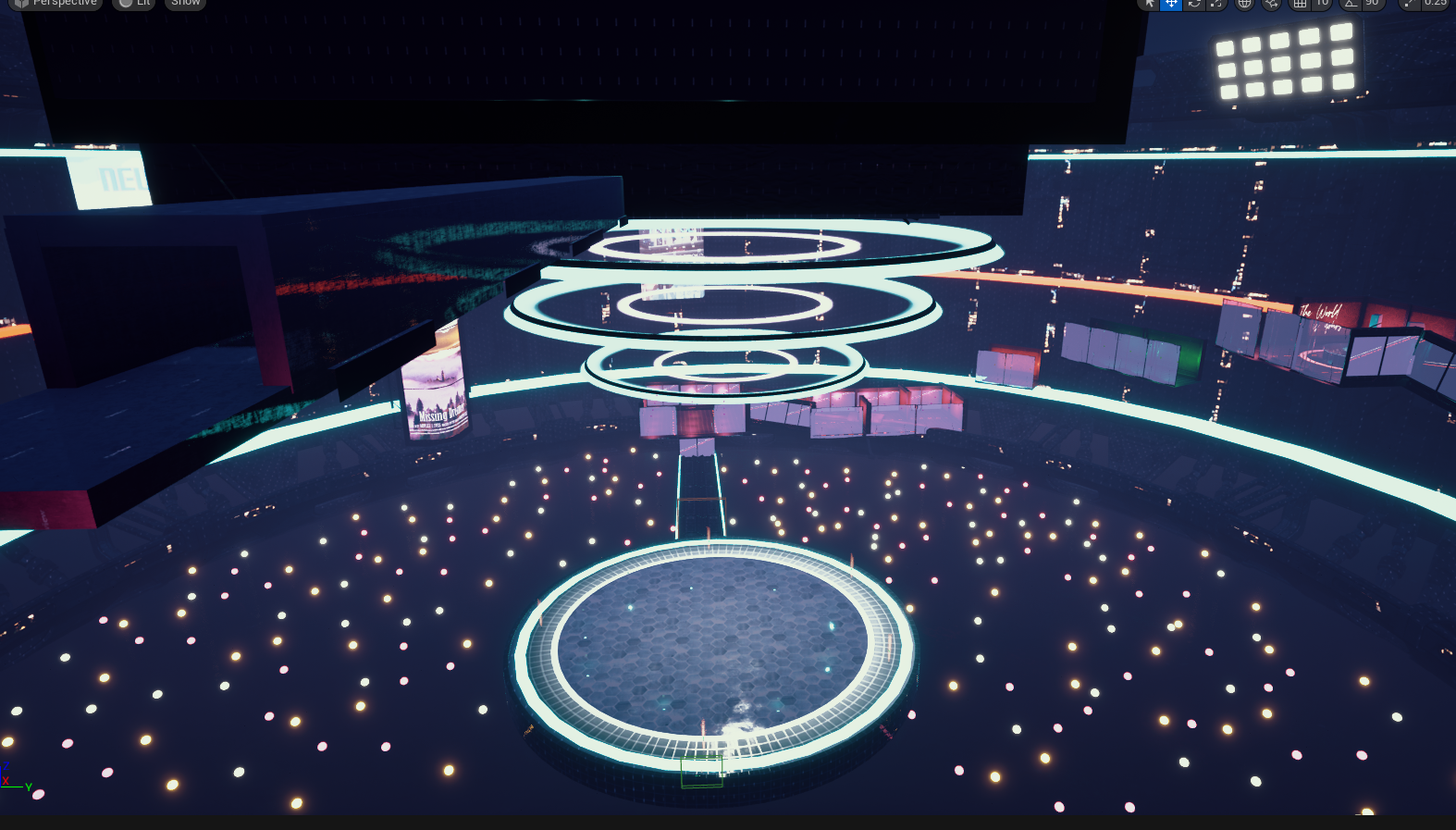
A First Person Shooter
#0123
Scroll ↓
Abstract
#0123 is a first person shooter. I was the producer and lead designer.
Responsibilities:
As producer and pm: define game vision & direction; set timeline & milestones; assign tasks, prioritizes workflows; internal & external communications; production tracking; process optimization. Method/software: Trello, Git + Fork.
As lead designer: define core gameplay; ensure design team consistancy; create documentations & guidelines; decision making and problem solving.
As level/AI designer: from 0 to 1, design, prototype and implement levels, AI, enemy emplacement and Boss. Together with map editor, choose and use assets from marketplace to build the level to achieve design requirements.
In the following two cases, I will indroduce how I design and implement the level Arena and a boss fight.
Level design: Arena
Level showcase
Level beats (full game)
Moodboard
Arena moodbored: cyber, neon, luxurious
The Arena is the biggest and most crucial level in this game. It's where the elites aboard the ship gathered to watch matches, and before the ship's crash, it was the pinnacle of luxury and core attraction. Narratively, I aim for a luxurious and high-tech atmosphere within the Arena. Even post-crash, with power systems damaged, players can still sense its former importance through flickering LED screens, towering neon advertisements, and glass viewing balconies, highlighting its central role in the ship's existence.
Sketch
The Arena isn't just a stage; it's part of a vast space that includes the Energy Core area where players begin. This vast, cold metallic space filled with energy cores, grids, and circuits serves as a tutorial level where players adapt to light, space, and jumping mechanics before entering the main Arena. Players will utilize teleportation skills to swiftly defeat enemies on platforms before progressing to the Screen Room. The Screen Room houses the giant broadcast screens above the Arena. Transitioning from the expansive Energy Core, players experience visual compression, preparing for the Arena's spectacle. Leaving the Energy Room, players traverse through massive cables to reach the spectator area—the luxurious balcony—surrounding half of the Arena. Here, they can view the Arena from various angles through glass and witness the core elements: the stage and bridges leading to it, setting up suspense for the upcoming Boss battle. The layout challenges players' teleportation skills and quick enemy identification on the balcony's varying heights. After exploring the balcony, players encounter a light bridge—revisiting their initial entry point into the Arena—and finally cross the bridge to confront the intense Boss battle on the stage.
Blockout to Finals
Energy Core (block out)
Broken tunnel above Arena (block out)
Enter Arena (block out)
Stage (block out)
In level visual and pace design, solving the challenge of linear progression within a vast space was key. Instead of direct traversal within the Arena, I integrated bridges and spectator stands at a distance from the actual core, offering close-up combat experiences while also showcasing the Arena's layout from afar. Drawing inspiration from esports and sports event architecture, I added large multi-panel screens above the stage to simulate a more realistic view from the stands. The circular layout of the stage and spectator stands was influenced by ancient Roman coliseums. The Arena is designed to feature diverse environmental elements supporting various combat strategies, combining open and narrow spaces with different enemy types.
Energy Core (final)
Broken tunnel above Arena (final)
Enter Arena (final)
Stage (final)
I introduce height changes to allow players to appreciate different parts of the Arena in varied environments. Navigational clarity was also considered, ensuring players can easily identify key areas and paths. I borrowed visual themes from "Tron: Legacy" to create a cyberpunk Arena ambiance, but realized too much visual complexity could disorient players. Thus, I differentiated areas using distinct visual focal points: the stage, screens, and spectator stands. Initially, I thought the Arena should reflect a semi-ruined state due to the ship's crash, echoing the theme of "fighting amidst ruins." However, I found that a partially intact Arena, showcasing its former glory, was more engaging, particularly with a central stage heightening player expectations, leading us to introduce a boss fight.
Boss design: Chaos
Question: How to make a boss in 4 hours?
That will be a mess so I introduce the core traits will be CHAOS.
I use Animation states, Behavior tree, Game Ability system, and scripting to implement boss’s different behavior and phases, to introduce colorful experiences to the players.
Chaos Phase 1: find the real boss in a group of enemies
Surprise.
Chaos Phase 2: Chaos shows up
Boss shows up and transforms.
Chaos Phase 3: Chaos runaway, platforming and chasing
Chasing and platforming.


